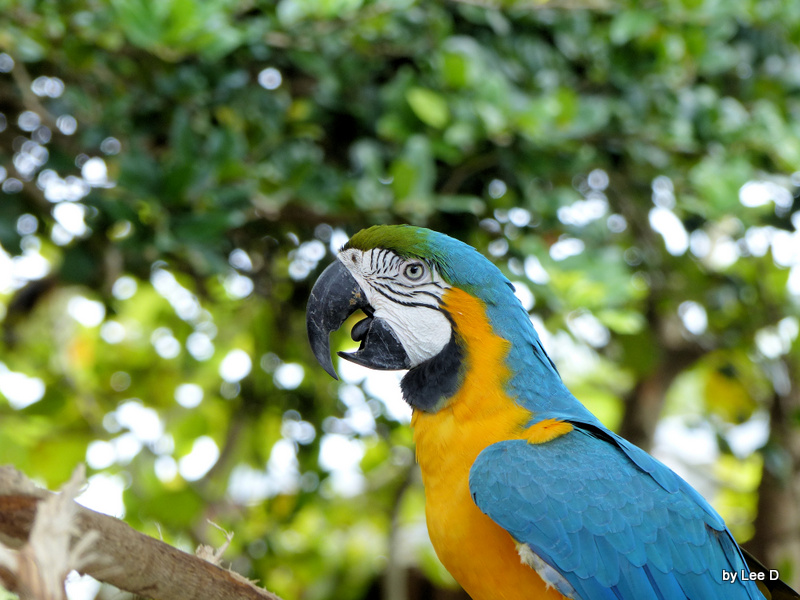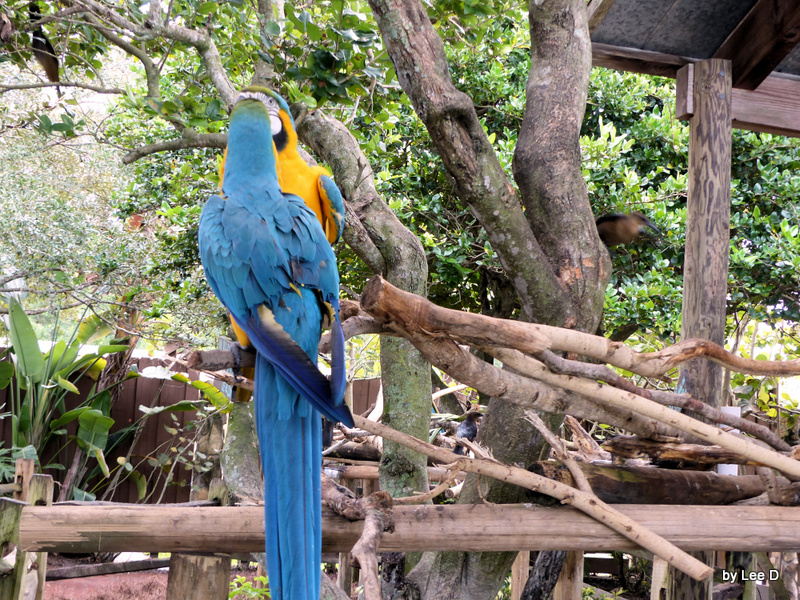
Blue Mountain Lory
*
BLUE MOUNTAIN LORY.
HIS bird inhabits the vast plains of the interior of New South Wales. It is one of the handsomest, not only of the Australian Parrots, but takes foremost place among the most gorgeously dressed members of the Parrot family that are to be met with in any part of the world. It is about eleven or twelve inches in length. The female cannot with certainty be distinguished from her mate, but is usually a very little smaller. The Lory seldom descends to the ground, but passes the greater part of its life among the gum trees upon the pollen and nectar on which it mainly subsists. In times of scarcity, however, it will also eat grass seeds, as well as insects, for want of which it is said, it often dies prematurely when in captivity.
Dr. Russ mentions that a pair obtained from a London dealer in 1870 for fifty dollars were the first of these birds imported, but the London Zoological Society had secured some of them two years before.
Despite his beauty, the Blue Mountain Lory is not a desirable bird to keep, as he requires great care. A female which survived six years in an aviary, laying several eggs, though kept singly, was fed on canary seed, maize, a little sugar, raw beef and carrots. W. Gedney seems to have been peculiarly happy in his specimens, remarking, “But for the terribly sudden death which so often overtakes these birds, they would be the most charming feathered pets that a lady could possess, having neither the power nor inclination to bite savagely.” The same writer’s recommendation to feed this Lory exclusively upon soft food, in which honey forms a great part, probably accounts for his advice to those “whose susceptible natures would be shocked” by the sudden death of their favorite, not to become the owner of a Blue Mountain Lory.
Like all the parrot family these Lories breed in hollow boughs, where the female deposits from three to four white eggs, upon which she sits for twenty-one days. The young from the first resemble their parents closely, but are a trifle less brilliantly colored.
They are very active and graceful, but have an abominable shriek. The noise is said to be nearly as disagreeable as the plumage is beautiful. They are very quarrelsome and have to be kept apart from the other parrots, which they will kill. Other species of birds however, are not disturbed by them. It is a sort of family animosity. They have been bred in captivity.
The feathers of the head and neck are long and very narrow and lie closely together; the claws are strong and hooked, indicating their tree climbing habits. Their incessant activity and amusing ways make these birds always interesting to watch.
Birds Illustrated by Color Photography – Revisited
Vol 1. February, 1897 No. 2
*

Rainbow Lorikeet (Trichoglossus moluccanus) by Ian
Lee’s Addition:
Rainbow Lorikeet is what the Blue Mountain Lory is known as today. Actually, it is probably the subspecies “Swainson’s Lorikeet.” It is confusing at times with the Rainbow’s. Many of the Zoos give them various names.
Lories and lorikeets (tribe Lorini) are small to medium-sized arboreal parrots characterized by their specialized brush-tipped tongues for feeding on nectar of various blossoms and soft fruits, preferably berries. The species form a monophyletic group within the parrot family Psittaculidae. Traditionally, they were considered a separate subfamily (Loriinae) from the other subfamily (Psittacinae) based on the specialized characteristics, but recent molecular and morphological studies show that the group is positioned in the middle of various other groups. They are widely distributed throughout the Australasian region, including south-eastern Asia, Polynesia, Papua New Guinea, Timor Leste and Australia, and the majority have very brightly coloured plumage.
The usage of the terms “lory” and “lorikeet” is subjective, like the usage of “parrot” and “parakeet”. Species with longer tapering tails are generally referred to as “lorikeets”, while species with short blunt tails are generally referred to as “lories” (Wikipedia)
*

Rainbow Lorikeet (Trichoglossus moluccanus) also known as Swainson’s ©WikiC
*
Looking at these beautiful birds, by whatever name it is called, one can’t help but remember the Promise the LORD made to all his created creatures. He promised never to destroy the whole earth again with a worldwide flood and to remind Him and us of that promise, He gave us the rainbow.
It shall be, when I bring a cloud over the earth, that the rainbow shall be seen in the cloud; and I will remember My covenant which is between Me and you and every living creature of all flesh; the waters shall never again become a flood to destroy all flesh. The rainbow shall be in the cloud, and I will look on it to remember the everlasting covenant between God and every living creature of all flesh that is on the earth.” And God said to Noah, “This is the sign of the covenant which I have established between Me and all flesh that is on the earth.” (Genesis 9:14-17 NKJV)

Rainbow (aka Swainson’s) Lorikeet by Lee at Lowry Pk Zoo
*

Birds Illustrated by Color Photograhy Vol 1 February 1897 No 2 – Cover
Birds Illustrated by Color Photography – Revisited – Introduction
The above article is the first article in the monthly serial for February 1897 “designed to promote Knowledge of Bird-Live.” These include Color Photography, as they call them, today they are drawings. There are at least three Volumes that have been digitized by Project Gutenberg.
To see the whole series of – Birds Illustrated by Color Photography – Revisited
*
(Information from Wikipedia and other internet sources)
Next Article – The American Red Bird
Previous Article – The Red Wing Black Bird – The Bird Of Society
ABC’s of the Gospel
Links:
Blue Mountain Lory
Swainson’s Blue Mountain, Swainson’s Blue Mt. Lorikeet, Swainson’s Lory, Blue Mountain Lories – Avian Web
Rainbow Lorikeet – Wikipedia
*





























































